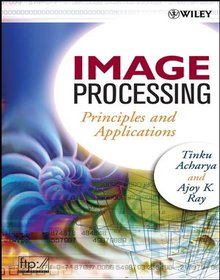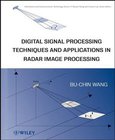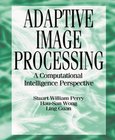Image Processing
Principles and Applications

Book Details:
| Publisher: | Wiley-Interscience |
| Series: | Wiley , Principles |
| Author: | Tinku Acharya |
| Edition: | 1 |
| ISBN-10: | 0471719986 |
| ISBN-13: | 9780471719984 |
| Pages: | 452 |
| Published: | Sep 08 2005 |
| Posted: | Nov 19 2014 |
| Language: | English |
| Book format: | |
| Book size: | 31.74 MB |
Book Description:
Image processing-from basics to advanced applicationsLearn how to master image processing and compression with this outstanding state-of-the-art reference. From fundamentals to sophisticated applications, Image Processing: Principles and Applications covers multiple topics and provides a fresh perspective on future directions and innovations in the field, including:* Image transformation techniques, including wavelet transformation and developments* Image enhancement and restoration, including noise modeling and filtering* Segmentation schemes, and classification and recognition of objects* Texture and shape analysis techniques* Fuzzy set theoretical approaches in image processing, neural networks, etc.* Content-based image retrieval and image mining* Biomedical image analysis and interpretation, including biometric algorithms such as face recognition and signature verification* Remotely sensed images and their applications* Principles and applications of dynamic scene analysis and moving object detection and tracking* Fundamentals of image compression, including the JPEG standard and the new JPEG2000 standardAdditional features include problems and solutions with each chapter to help you apply the theory and techniques, as well as bibliographies for researching specialized topics. With its extensive use of examples and illustrative figures, this is a superior title for students and practitioners in computer science, wireless and multimedia communications, and engineering.
Download Link:
Related Books:
Digital Signal Processing
Techniques and Applications in Radar Image Processing
A self-contained approach to DSP techniques and applications in radar imagingThe processing of radar images, in general, consists of three major fields: Digital Signal Processing (DSP); antenna and radar operation; and algorithms used to process the radar images. This book brings together material from these different areas to allow readers to gain a thorough understanding of how radar images are processed.The book is divided into three main parts and covers:* DSP principles and signal characteristics in both analog and digital domains, advanced signal sampling, and interpolation techniques* Antenna theory (Maxwell equation, radiation field from dipole, and linear phased array), radar fundamentals, radar modulation, and target-detection techniques (c...
Adaptive Image Processing
A Computational Intelligence Perspective
Adaptive image processing is one of the most important techniques in visual information processing, especially in early vision such as image restoration, filtering, enhancement, and segmentation. While existing books present some important aspects of the issue, there is not a single book that treats this problem from a viewpoint that is directly linked to human perception - until now. This reference treats adaptive image processing from a computational intelligence viewpoint, systematically and successfully, from theory to applications, using the synergies of neural networks, fuzzy logic, and evolutionary computation. Based on the fundamentals of human perception, this book gives a detailed account of computational intelligence methods and algorithms...
The Image Processing Handbook
6th Edition
Whether obtained by microscopes, space probes, or the human eye, the same basic tools can be applied to acquire, process, and analyze the data contained in images. Ideal for self study, The Image Processing Handbook, Sixth Edition, first published in 1992, raises the bar once again as the gold-standard reference on this subject. Using extensive new illustrations and diagrams, it offers a logically organized exploration of the important relationship between 2D images and the 3D structures they reveal. Provides Hundreds of Visual Examples in FULL COLOR! The author focuses on helping readers visualize and compare processing and measurement operations and...
Feature Extraction and Image Processing
Focusing on feature extraction while also covering issues and techniques such as image acquisition, sampling theory, point operations and low-level feature extraction, the authors have a clear and coherent approach that will appeal to a wide range of students and professionals. *Ideal module text for courses in artificial intelligence, image processing and computer vision*Essential reading for engineers and academics working in this cutting-edge field*Supported by free software on a companion website...
2007 - 2021 © eBooks-IT.org




